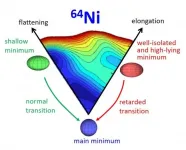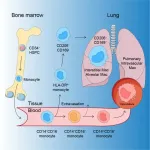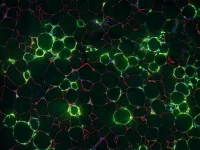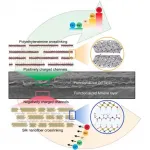Most mental health disorders are diagnosed and treated based on clinical interviews and questionnaires - and, for about a century, data from cognitive tests has been added to the diagnostic process to help clinicians learn more about how and why people behave in a certain way.
Cognitive testing in ADHD is used to identify a variety of symptoms and deficits, including selective attention, poor working memory, altered time perception, difficulties in maintaining attention and impulsive behavior. In the most common class of performance tests, children are told to either press a computer key or avoid hitting a key when they see a certain word, symbol or other stimulus.
For ADHD, however, these cognitive tests often don't capture the complexity of symptoms. The advent of computational psychiatry - comparing a computer-simulated model of normal brain processes to dysfunctional processes observed in tests - could be an important supplement to the diagnostic process for ADHD, the Ohio State researchers report in a new review published in the journal Psychological Bulletin.
The research team reviewed 50 studies of cognitive tests for ADHD and described how three common types of computational models could supplement these tests.
It is widely recognized that children with ADHD take longer to make decisions while performing tasks than children who don't have the disorder, and tests have relied on average response times to explain the difference. But there are intricacies to that dysfunction that a computational model could help pinpoint, providing information clinicians, parents and teachers could use to make life easier for kids with ADHD.
"We can use models to simulate the decision process and see how decision-making happens over time - and do a better job of figuring out why children with ADHD take longer to make decisions," said Nadja Ging-Jehli, lead author of the review and a graduate student in psychology at Ohio State.
Ging-Jehli completed the review with Ohio State faculty members Roger Ratcliff, professor of psychology, and L. Eugene Arnold, professor emeritus of psychiatry and behavioral health.
The researchers offer recommendations for testing and clinical practice to achieve three principal goals: better characterizing ADHD and any accompanying mental health diagnoses such as anxiety and depression, improving treatment outcomes (about one-third of patients with ADHD do not respond to medical treatment), and potentially predicting which children will "lose" the ADHD diagnosis as adults.
Decision-making behind the wheel of a car helps illustrate the problem: Drivers know that when a red light turns green, they can go through an intersection - but not everyone hits the gas pedal at the same time. A common cognitive test of this behavior would repeatedly expose drivers to the same red light-green light scenario to arrive at an average reaction time and use that average, and deviations from it, to categorize the typical versus disordered driver.
This approach has been used to determine that individuals with ADHD are typically slower to "start driving" than those without ADHD. But that determination leaves out a range of possibilities that help explain why they're slower - they could be distracted, daydreaming, or feeling nervous in a lab setting. The broad distribution of reactions captured by computer modeling could provide more, and useful, information.
"In our review, we show that this method has multiple problems that prevent us from understanding the underlying characteristics of a mental-health disorder such as ADHD, and that also prevent us from finding the best treatment for different individuals," Ging-Jehli said. "We can use computational modeling to think about the factors that generate the observed behavior. These factors will broaden our understanding of a disorder, acknowledging that there are different types of individuals who have different deficits that also call for different treatments.
"We are proposing using the entire distribution of the reaction times, taking into consideration the slowest and the fastest reaction times to distinguish between different types of ADHD."
The review also identified a complicating factor for ADHD research going forward - a broader range of externally evident symptoms as well as subtle characteristics that are hard to detect with the most common testing methods. Understanding that children with ADHD have so many biologically based differences suggests that a single task-based test is not sufficient to make a meaningful ADHD diagnosis, the researchers say.
"ADHD is not only the child who is fidgeting and restless in a chair. It's also the child who is inattentive because of daydreaming. Even though that child is more introverted and doesn't express as many symptoms as a child with hyperactivity, that doesn't mean that child doesn't suffer," Ging-Jehli said. Daydreaming is especially common in girls, who are not enrolled in ADHD studies nearly as frequently as boys, she said.
Ging-Jehli described computational psychiatry as a tool that could also take into account - continuing the analogy - mechanical differences in the car, and how that could influence driver behavior. These dynamics can make it harder to understand ADHD, but also open the door to a broader range of treatment options.
"We need to account for the different types of drivers and we need to understand the different conditions to which we expose them. Based on only one observation, we cannot make conclusions about diagnosis and treatment options," she said.
"However, cognitive testing and computational modeling should not be seen as an attempt to replace existing clinical interviews and questionnaire-based procedures, but as complements that add value by providing new information."
According to the researchers, a battery of tasks gauging social and cognitive characteristics should be assigned for a diagnosis rather than just one, and more consistency is needed across studies to ensure the same cognitive tasks are used to assess the appropriate cognitive concepts.
Finally, combining cognitive testing with physiological tests - especially eye-tracking and EEGs that record electrical activity in the brain - could provide powerful objective and quantifiable data to make a diagnosis more reliable and help clinicians better predict which medicines would be most effective.
Ging-Jehli is putting these suggestions to the test in her own research, applying a computational model in a study of a specific neurological intervention in children with ADHD.
"The purpose of our analysis was to show there's a lack of standardization and so much complexity, and symptoms are hard to measure with existing tools," Ging-Jehli said. "We need to understand ADHD better for children and adults to have a better quality of life and get the treatment that is most appropriate."
INFORMATION:
This research was supported by the Swiss National Science Foundation and the National Institute on Aging.
Contact:
Nadja Ging-Jehli,
gingjehli.1@osu.edu
Written by Emily Caldwell,
Caldwell.151@osu.edu;
614-292-8152






